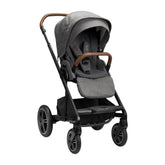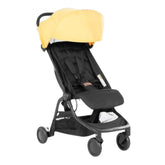How to Share Books with Children 2 and 3 Years Old

Updated 7 Jan 2025
Finding just the right book or poem to share with children is rewarding in so many ways. It can help them improve their speech skills and introduce new words and language patterns. Reading prepares children to learn and listen in school. It’s also a great way to bond with your little one and promote brain development, especially in the early years of life.
Shared Reading: How to Get Started Reading With Your Toddler
Reading stories fosters the imagination and helps your child learn about the world around them. It also helps develop your child’s social skills and skills for managing emotions. At two to three years of age, reading with your child is about having fun, spending one-on-one time bonding, and modeling a love of reading. Here are a few tips that can help you and your toddler make the most of book time.
1. Create a routine.
The American Academy of Pediatrics (AAP) recommends setting aside 10 to 20 minutes each evening to incorporate reading as part of your child’s regular bedtime routine. Find a comfortable, quiet place to share a book. Allow your little one to choose a few they would like to hear. It’s common for children this age to want to hear the same book over and over again. Point out colors, shapes, and numbers in their books. Ask your child to tell you about the pictures and the story. Answer their questions with enthusiasm.
2. Offer choices.
Take your child to the local public library to borrow books or to enjoy storytime. Encourage your child to choose their own books at the library. It’s okay to offer suggestions and explain why you think they might enjoy certain books, but allowing your child to choose the books you read ensures that they are truly interested.
3. Incorporate movement.
Children are often on the move, so don't worry if they can't sit still during a story. Choose books with repeating phrases or actions to encourage active participation.
4. Encourage questions.
Reading books together gives you an opportunity for one-on-one time with your toddler and get a deeper insight into their perspective. Talk to them about what they enjoyed or disliked about a book and how the story made them feel. This helps encourage language and vocabulary development and helps them learn how to identify emotions.
5. Consider the timing and mood.
Consider the timing and mood of the reading experience. Choose active books for playtime and quieter stories for bedtime. If story time is causing stress, try a different book or read it later. Reading should be fun for both you and your child.
6. Play with words.
When you read a familiar story to your child, try intentionally making mistakes or letting your child fill in missing words. Pretend to forget the lines of the poem or story to see if your little one can jump in. Encourage creativity and silliness to make reading enjoyable.
7. Explore non-fiction books.
Non-fiction books can be a great choice for children with specific interests. If your little one loves dinosaurs, a book full of dinosaur trivia instead of a story or poem may be perfect! Let your toddler tell you all about it and explain what they know. This is an excellent way to allow them to explore more detailed information and increase their understanding of the world.

General Tips for Reading to Infants, Toddlers, and Preschoolers
When trying to share a book or poem with babies, preschool children, or toddlers, the most important thing is that your child enjoys looking at books with you and that the experience leads to conversation and interaction between you and your child. Keep in mind these helpful tips when reading with your little one:
- Make reading part of your everyday routine.
- Designate a special reading area – for instance, a comfy chair or beanbag. Be sure it’s large enough to comfortably accommodate both you and your little one. Having it near your bookshelf or a basket of books is a good idea.
- Keep story time comfortable and enjoyable. You want your child to look forward to reading! There may be days when they’re not feeling up to reading for a long stretch, and that’s okay. Try to let their enthusiasm guide you.
- Eliminate distractions. Turn off electronic devices, silence your phone, and don’t stop to respond to text messages or e-mails. Focus this time on your child so that they can listen to the sound of your voice.
- Snuggle your little one close so that they can observe your face and see the words and pictures while you read.
- Let your child hold the book and turn the pages. Kids love to actively participate and to have some control over the storytelling process. It’s okay if they skip some pages. Your aim should be to make the book an enjoyable experience. Reading every page isn’t a “have-to” at this age.
- Read for only as long as your little one is interested. Some children will pay attention for ten minutes or more to a favorite story. Some may insist on going through an entire pile of books with you! Others may be too energetic to sit still for that long. Consider using different voices or even a puppet to get your little one’s attention.
- Allow your child to look at the same book over and over again. Repetition is comforting to children. It can actually help your little one learn new words and better comprehend the ideas within the book.









